This book isdedicated to my father Jim who inspired me to follow my dreams.
Chapter 1- The History of the Green Smoothie
Green smoothies are popular amongthose seeking a healthy lifestyle. Touted as the ideal healthy snack and even anutritious meal replacement, green smoothies are found on many caf and streetvendor menus.
Their rise to fame is attributed to the increased popularity ofthe health and weight-loss shakes that have swept the nation. Consumerssearching for a more nutrient-rich, dairy-free or low-fat option, helped tobring the green smoothie to the forefront. With fresh, organic produce readilyavailable, more people are embracing the green trend, whipping up greensmoothies at home. Believers in the green smoothie are reaping the healthbenefits of these fresh satisfying concoctions that are void of preservativesand additives. The thing is that the green smoothie is anything but a newsensation. Traditionally, a smoothie is ablended drink, made of fruit, milk and yogurt.
Some recipes call for fruitjuices to avoid dairy products. Over the years this blend has become morespecialized and now features many variations. It is important to point out thatsmoothies are not milkshakes. Smoothies use whole fruits and vegetables,whereas milkshake tends to add flavor-enhancers and sweeteners to milk.Smoothies are typically thicker than a milkshake too. Smoothies arent onlymade from the juice of fruits and vegetables either; hence their nutritionalvalue does differ to that of juicing foods. This is an important distinction,as often juicing is done to enjoy the flavor of certain fruits and vegetables.When it comes to green smoothies, the vegetables are not always selected fortheir taste.
Their essential vitamins, minerals and dietary fiber far outweighany flavor they add to a drink.  Who coined the name smoothie isnot really known. The oldest patent associated with the title belongs toStephen Kuhnau, who established the 1970s Smoothie King franchise. Buthistorically, the concept of a smoothie traces back further. The traditionaldrink of India, known as a lasse bears a remarkable resemblance to asmoothie. It is a blend of yoghurt, fruit, honey and spices, and was aroundbefore the birth of Christ.
Who coined the name smoothie isnot really known. The oldest patent associated with the title belongs toStephen Kuhnau, who established the 1970s Smoothie King franchise. Buthistorically, the concept of a smoothie traces back further. The traditionaldrink of India, known as a lasse bears a remarkable resemblance to asmoothie. It is a blend of yoghurt, fruit, honey and spices, and was aroundbefore the birth of Christ.
In Brazil, drinks made of fruit pure blended withyogurt also feature in antiquity. Oddly enough, thick, creamy drinks containingavocado and other fruits are traditional fare in Vietnam, the Philippines andIndonesia. The 1920s and 1930s saw entrepreneurs promote these foreign elixirsin health stores across the West Coast of America. As technology developed, so did thesmoothie. The 1920s saw the birth of household appliances. Homes soon filledwith machines that made life easier.
One of these highly valued kitchenaccessories was the blender. The 1933 Miracle Mixer is accredited for itsefforts in establishing the smoothie as a household name. It, along with theimproved models released well into the 1940s, all featured smoothie recipes intheir accompanying cookbooks. As the technology developed machines capable ofcombining ingredients into smooth, thick liquids, the smoothie became morepopular. By the 1960s, typical smoothieblends saw fruits, fruit juices or milk being whipped together in tasty treats.The 1970s embraced the trend of using frozen yoghurt in smoothies. The 1980sadded supplements; experimenting with protein and vitamin powders.
Yet it wasthe 1990s that heralded a new smoothie renaissance, giving birth to amulti-billion dollar industry across the Western World: but what of the greensmoothie? Victoria Boutenko introduced thegreen smoothie at a time when smoothies become more popular than ever. Tired ofconstant, niggling health issues, Boutenko decided to try the all-natural, rawfoods diet. In the 1990s, she subjected herself, and her family, to a decadelong diet that strictly had them eating meals rich in green, leafy produce. Strangely enough, her researchcompared the Standard American Diet (SAD) with the typical diet of our closestliving relative, the chimpanzee. She found that chimps ate a diet of at leastforty percent leafy greens and fifty percent fruit. The highly promotedraw-food diet encouraged extremely high amounts of fruit, and recommended onlyten percent of leafy greens per day.
Boutenko began exploring the benefits ofincreasing the greens in their diet. Based on her research, and her ownfamilys experiences, Boutenko found green smoothies to be the greatest healthchoice. Victoria Boutenko recommended thatthe average person needed to consume at least four servings of green leaves andup to four pounds of fresh fruit each day. Although most people could stomachthe fruit, munching down large servings of salad leaves became a chore. Furtherresearch also revealed that the full nutritional value of green leafyvegetables was only fully gained when the cell walls of the leaves were chewed,or cut. The smaller the leaves wereshredded, the better they were for the digestive system.
This information ledto the development of the green smoothie. By using a high-grade blender, greenleafy matter such as spinach, was easily chopped into a smooth substance thatmixed very well with fruit and a little water. The generous serving of fruitsmasked any bitter taste of a variety of fresh leaves, creating a drink that washighly nutritional; and so the green smoothie revolution begun. Today, many people are experiencingthe benefits of drinking green smoothies. There are hundreds of recipe booksand websites that are dedicated to creating varied and tasty versions of thishealth tonic. Green smoothies promise to offer a low-calorie, highlynutritional boost to the diet.
They contain essential vitamins and traceelements that can only be sourced from the hero of the drink, the green leafyvegetables. Green smoothies are said to help with digestive issues, but havealso been recommended to ease rheumatoid arthritis and many allergies and otherhealth concerns. Today, the green smoothie continues to evolve as new blendsand products are explored.
Chapter 2- The Benefits of GreenSmoothies
A lot of health fanatics love todrink smoothies. Some people make a green smoothie for breakfast while otherpeople drink a smoothie before they lift weights. Smoothies have gained inpopularity as they are easy to make and can be made on the go.
Beyond that,most health conscious people would agree that a green smoothie is a perfectsnack or meal anytime of the day. For these reasons, green smoothies have explodedin popularity. Here are ten benefits of green smoothies. Most people do not drink enoughwater, and a smoothie is an excellent way to get the required eight glasses ofwater per day. In fact, a smoothie drinker who does not get enough water canadd water to their smoothie. This is a good way to get hydrated without eventhinking about it.




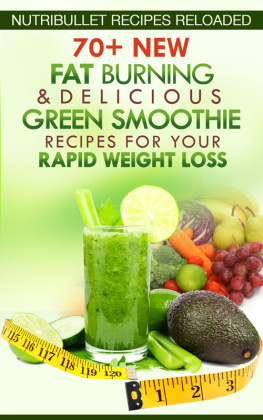
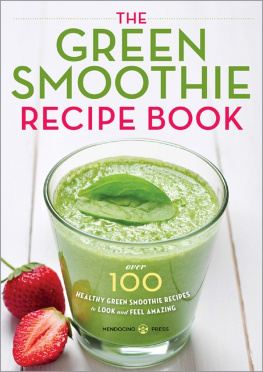
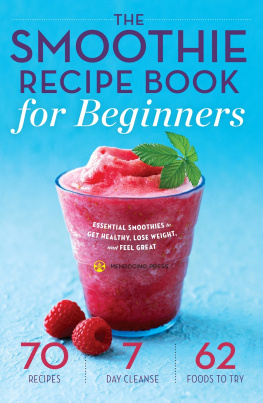
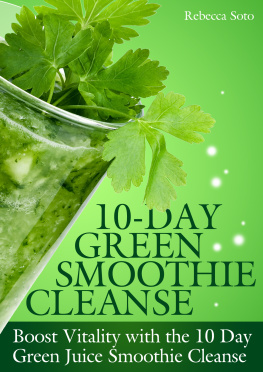
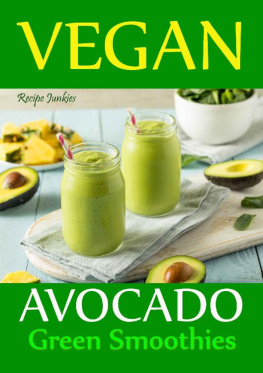
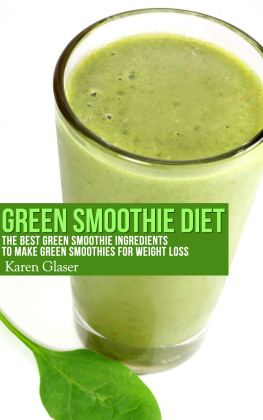
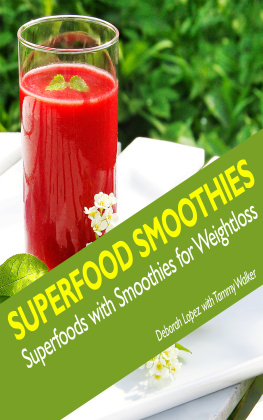
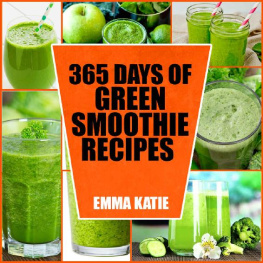

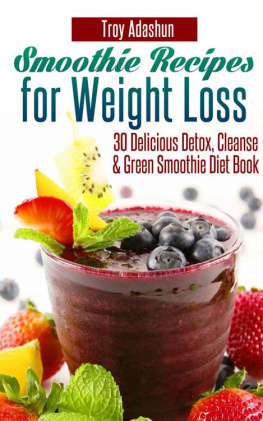

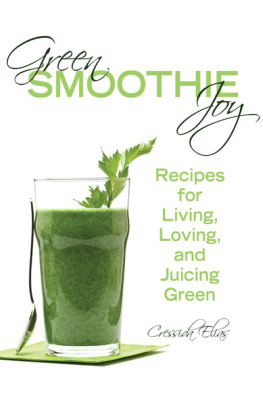
 Who coined the name smoothie isnot really known. The oldest patent associated with the title belongs toStephen Kuhnau, who established the 1970s Smoothie King franchise. Buthistorically, the concept of a smoothie traces back further. The traditionaldrink of India, known as a lasse bears a remarkable resemblance to asmoothie. It is a blend of yoghurt, fruit, honey and spices, and was aroundbefore the birth of Christ.
Who coined the name smoothie isnot really known. The oldest patent associated with the title belongs toStephen Kuhnau, who established the 1970s Smoothie King franchise. Buthistorically, the concept of a smoothie traces back further. The traditionaldrink of India, known as a lasse bears a remarkable resemblance to asmoothie. It is a blend of yoghurt, fruit, honey and spices, and was aroundbefore the birth of Christ.